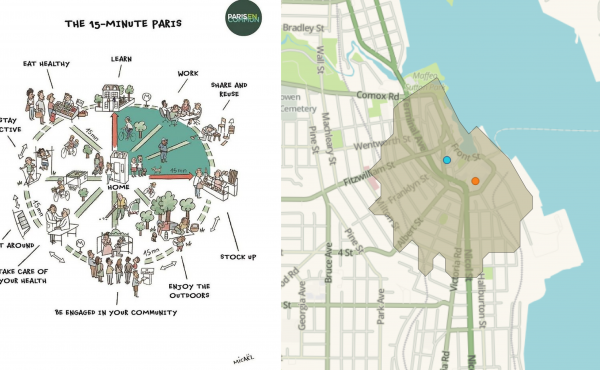At his recent lecture at Simon Fraser University, John Pucher of Rutgers University documented the boom in cycling in both European and North American cities.
Adding to his previous talks, he discussed how cycling can thrive even in cities with no history or culture of daily, utilitarian cycling if government policies provide safe, convenient and pleasant cycling conditions.His message was that almost all Canadian and American cities are on the right path. Dozens of cities throughout North America have more than doubled levels of cycling since 1990, and some large cities such as Chicago, Portland, Minneapolis, San Francisco and Washington, DC, have more than quadrupled the bike share of work commuters since 1990.
Virtually all North American cities have plans for expanding their cycling networks, combined with a range of complementary programs such as bike sharing, bike-transit integration, safe routes to schools, mass car-free street events (ciclovias) and better training of both motorists and cyclists. Even in the American southeast, which currently has the lowest rate of cycling, many cities are installing cycle tracks, bike lanes and bike parking.
In short, North American cities have already made considerable progress in raising both cycling and walking levels, but far more needs to be done. With over 40 percent of all bike trips shorter than two miles, there is great potential for further growth. It is crucial to convey to the media, the public and politicians the enormous economic, social, environmental and health benefits of walking and cycling.
At the conclusion of this lecture, Pucher discussed several approaches to implementing policies that aim to increase walking and cycling and make them safer. Public information campaigns, combined with advocacy and coalition-building, are crucial, but there are other implementation strategies that can enhance public and political support. Perhaps the most effective strategy of all is to make cycling and walking possible for everyone, and, in particular, to get more seniors, children and women on bikes and on their feet.
For the introduction to this lecture, visit http://www.youtube.com/watch?v=Ax_DYo….
For an update on walking and biking statistics from Dale Bracewell of the City of Vancouver, visit http://www.youtube.com/watch?v=j8dC6m….
For the Q & A session that followed this lecture, visit http://www.youtube.com/watch?v=1xk3VC….


One comment
Just came back from New York where shops have posted signs welcoming cyclists ( consumers) – with a 15% off program if they arrive by bike. Vancouver businesses stand to gain greatly especially local neighborhood convenient stores, restaurants and bars if cycling past their doors is made safer – and proves to be an incentive to get more people out on two wheels. Cyclists make great repeat
customers and don’t require parking – which seems to be on everyone’s minds these days as the City of Vancouver sets out to act on Transportation 2040 which will see greater safety and access between the Burrard Street Bridge and Jericho Beach.